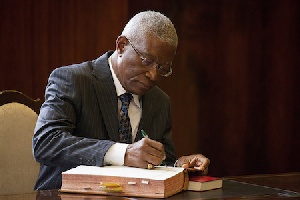Ghana's air dried sawnwood exports increased 35% between January and November 2014 compared to the same period in 2103. The increase in exports of air dry rather than kiln dry sawnwood can be attributed to the unavailability of power for manufacturers to operate kilns.
Ghana is currently experiencing extreme power shortages and scheduled load-shedding began last year. The ongoing power crisis is affecting the manufacturing sector where some companies have lowered production rates and cut staff numbers.
According to the most recent data from the Timber Industry Development Division (TIDD) of the Forestry Commission (FC), Ghana?s January to November 2014 timber export of 313,799 cubic metres of wood products earned Euro122.40 million.
Some 21 different products were exported and the following table illustrates the growth in exports for the main products.
| Product | Jan-Nov 2013 | Jan-Nov 2014 | Change in % |
| Vol (m3) | Vol (m3) | ||
| Sawnwood (AD) | 84,325 | 114,243 | 35% |
| Sawnwood (KD) | 58,158 | 54,571 | -6% |
| Plywood | 54,870 | 55,606 | 1% |
| Poles | 36 | 26,463 | % |
| Billets | 7,249 | 21,720 | 200% |
| Sliced veneer | 20,562 | 21,238 | 3% |
| Others | 20,453 | 19,958 | -2% |
| Total | 245,653 | 313,799 | 28% |
Ghana's sliced veneer exports to neighbouring countries between January and November 2014 totalled 85 cubic metres. The main markets were for veneers in Egypt, Italy, China, Spain and Germany. The major species used for the production of veneer were asanfina, ceiba and mahogany.
Plywood exports to neighbouring countries continue with buyers in Nigeria accounting for over 60% of total regional plywood sales. Nigeria is a major market in the ECOWAS block and Ghana plans to double exports.




















